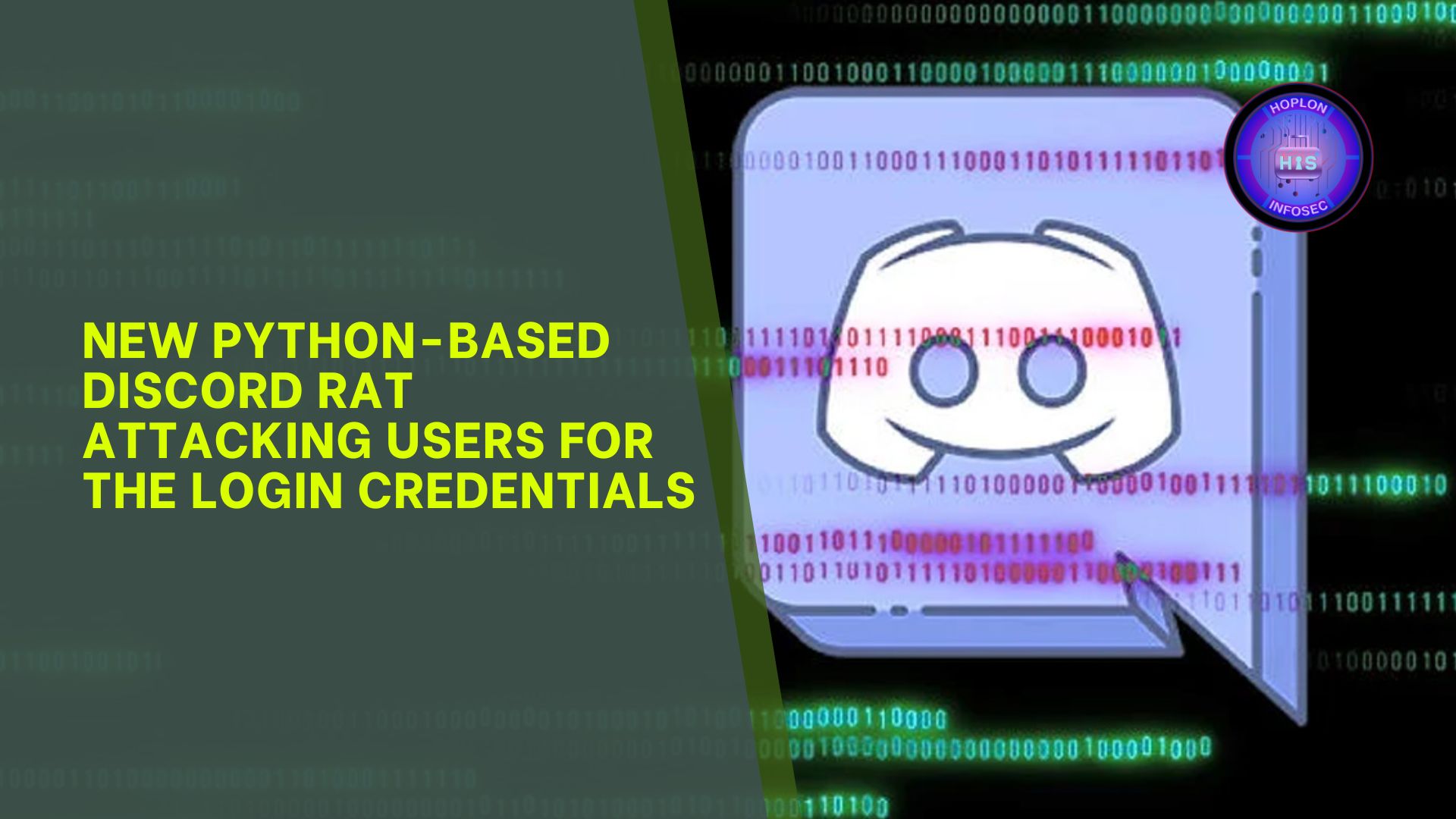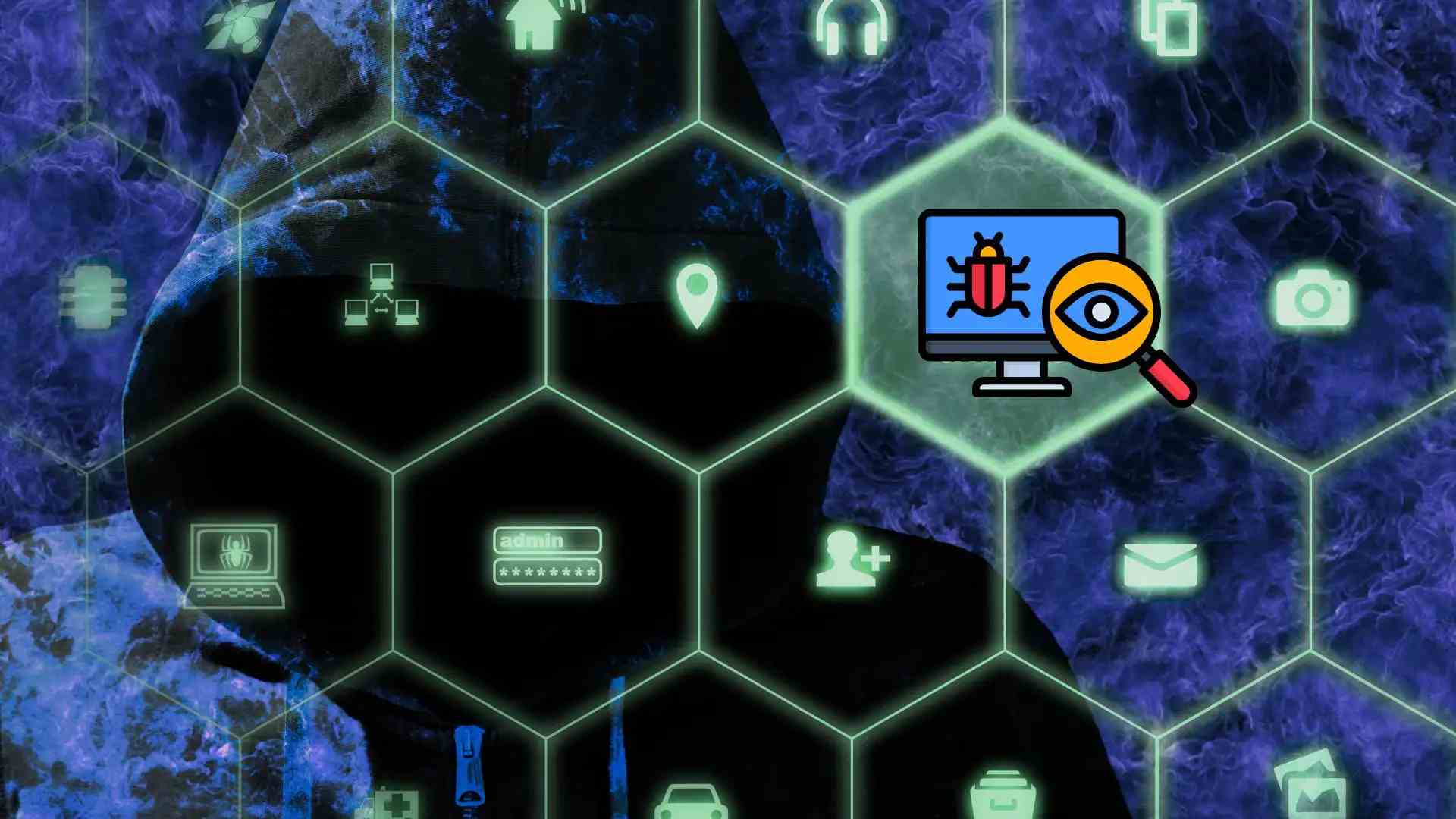In recent developments, cybersecurity experts have uncovered a sophisticated Python-based Remote Access Trojan Discord RAT that leverages Discord as its command and control infrastructure. This discovery has significant implications for users worldwide, especially given the malware’s ability to execute arbitrary system commands, capture screenshots, and, most notably, steal saved login credentials from popular web browsers. In this article, we delve deep into the workings of this emerging threat, explore its implications, and offer guidance on how to protect yourself and your organization against such advanced malware.
Background on Remote Access Discord RAT

Remote Access Trojans are a class of malware that allows unauthorized access and control over a victim’s computer system. Traditionally used by cybercriminals to spy on users, deploy additional malware, or exfiltrate sensitive information, these tools have evolved significantly. Modern RATs, like the one recently identified, not only provide attackers with the capability to control a system remotely but also integrate advanced features that help them avoid detection. The use of widely trusted platforms as part of their command infrastructure only amplifies the threat.
Emergence of Discord-based RATs
The latest iteration of RATs exploits Discord—a platform originally designed for communication within the gaming and professional communities. This novel use of Discord enables attackers to camouflage their activities under legitimate traffic, making it harder for conventional security systems to identify malicious behavior. By tapping into Discord’s capabilities, cybercriminals can issue commands, receive data, and even share files through channels that many organizations consider safe by default.
How the Discord-based RAT Works
Understanding the operational mechanics of this malware is essential for both cybersecurity professionals and everyday users. The RAT’s design cleverly integrates with Discord’s API to facilitate seamless communication between the attacker and the compromised system. This section details the technical aspects that make this malware particularly dangerous.
Command and Control Infrastructure
At its core, the malware initiates a Discord bot with elevated permissions. This bot is not just a passive listener; it actively reads all messages within designated channels and can execute predefined malicious commands. Once installed on a victim’s system, the malware creates a dedicated control channel on Discord servers. This channel becomes a persistent link between the attacker and the infected machine. With this setup, attackers can issue commands remotely, bypassing many traditional network security measures that might otherwise flag anomalous activity if it occurred over less common or unsanctioned channels.
The use of Discord as a command and control (C&C) mechanism is particularly insidious. Discord’s encryption and broad user base mean that the traffic generated by the malware blends seamlessly with legitimate communications. For security teams, this presents a dual challenge: not only must they identify the presence of the malware, but they also have to contend with the fact that the communication itself occurs over a trusted and popular platform.
Capabilities and Methods
Once the malware is activated, its range of functionalities comes to the forefront. The RAT can execute a variety of system commands, capture screenshots of the infected system, and, most alarmingly, extract stored credentials from web browsers. One of its critical operations involves targeting the credentials saved in Google Chrome’s database. By directly accessing the “Login Data” file, which holds sensitive information such as usernames and passwords, the malware effectively compromises the victim’s online security. After accessing the credentials, the malware transmits the data to the attacker through Discord’s file-sharing system. This direct extraction and transmission make it exceptionally difficult for victims to trace and remediate the breach.
The Mechanism of Credential Theft

The most concerning aspect of this RAT is its ability to steal saved login credentials from popular web browsers. This section explains in detail how credential theft is executed and why it poses such a significant threat.
Targeting Web Browsers
Web browsers have become repositories of sensitive information. They not only store cookies and cache but also maintain databases of saved login credentials. Google Chrome, with its vast user base, is a primary target for such attacks. The malware locates the “Login Data” file within the user’s profile directory. This file contains encrypted passwords and other critical data that, when decrypted, can provide an attacker with access to a user’s online accounts. The exploitation of this file is particularly worrisome because many users rely on browser-based password storage, assuming that such data is secure.
How the Code Operates
A closer look at the source code reveals a straightforward yet effective approach to stealing passwords. The malware listens for a specific command via Discord, which triggers the password extraction process. Here is an illustrative snippet of the code used in the operation:
Example Code Explanation
The malware monitors messages in a designated Discord channel, and when it detects a message matching a particular command, it retrieves the current username from the operating system. It then constructs a path to the Chrome “Login Data” file based on this username. If the file is found, the code reads the contents and sends the file as an attachment to the Discord channel. Following the transmission, the code deletes the original command message, thereby erasing any obvious traces of the operation. This clever sequence of actions minimizes the chances of detection and leaves minimal forensic evidence for investigators.
Security Implications for Users and Organizations
The discovery of this Discord-based RAT is alarming for both individual users and organizations. The implications of such an advanced malware strain extend far beyond mere data theft, affecting broader aspects of digital security and operational integrity.
Risk Assessment and Impact
The integration of Discord as a legitimate communication tool with the RAT’s command and control infrastructure increases the potential risk of widespread compromise. Users who are active on Discord might find themselves inadvertently exposed to malicious activity simply by interacting with what appears to be normal network traffic. The malware’s ability to capture screenshots and execute arbitrary system commands further exacerbates the risk, as attackers could potentially monitor real-time activities, capture sensitive documents, or even manipulate system settings to create additional vulnerabilities.
For organizations, the impact can be even more significant. With employees relying on Discord for team collaboration and communication, the potential for lateral movement within a corporate network is high. Once the RAT is deployed, attackers may gain access to confidential business information, internal communications, and even intellectual property, leading to severe financial and reputational damage.
Challenges in Detection
One of the key challenges in defending against this type of malware is its ability to blend in with legitimate network traffic. Traditional security solutions often focus on detecting anomalies in uncommon or unsecured channels. However, because Discord is a widely used and trusted platform, its traffic is less likely to trigger alerts in many security systems. Moreover, the malware’s self-cleaning features—such as deleting executed commands—make it even more difficult to identify and trace the breach. This stealthy nature requires organizations to rethink their threat detection strategies and consider more nuanced approaches that can identify malicious behavior hidden within normal activity patterns.
Evolution in Cyber Threats

The use of legitimate platforms like Discord for executing malicious activities represents a significant evolution in cyber threats. This section explores the broader implications of this trend and how it is reshaping the cybersecurity landscape.
Using Legitimate Platforms for Malicious Purposes
Cybercriminals are continually adapting to security advancements by exploiting the very tools that people use daily. By repurposing Discord—a platform designed to foster community and collaboration—for malicious activities, attackers have found a new way to bypass security measures. This trend is not isolated; many modern threats leverage trusted platforms and services to mask their activities. The use of such platforms makes it much more challenging for traditional security measures to distinguish between legitimate and harmful traffic.
The sophistication behind this approach is evident in how the RAT integrates with Discord’s infrastructure. It not only uses the platform’s communication channels for control but also exploits its file-sharing capabilities to exfiltrate data seamlessly. This dual-use strategy means that even if one aspect of the attack is detected, the other may remain hidden, giving cybercriminals a significant advantage.
Implications for Cybersecurity Strategies
The evolution of threats like this Discord-based RAT necessitates a re-evaluation of existing cybersecurity strategies. Traditional perimeter-based defenses are no longer sufficient in an era where attacks are masked by legitimate network traffic. Organizations must now adopt a more comprehensive security posture that includes behavioral analytics, real-time monitoring of network activity, and advanced threat detection systems capable of identifying anomalous patterns.
Additionally, there is a growing need for collaboration between cybersecurity vendors, industry groups, and platform providers like Discord. By sharing threat intelligence and developing integrated security protocols, the industry can better anticipate and counteract these emerging threats. The key is to move away from reactive measures and towards a proactive, intelligence-driven approach to cybersecurity.
Mitigation Strategies and Best Practices
Given the sophisticated nature of this threat, both individual users and organizations need to adopt robust mitigation strategies to protect their systems and sensitive data. Below, we outline several best practices aimed at reducing the risk of compromise from malware that leverages legitimate platforms.
For Individual Users
Individual users are at the frontline of digital security. To protect personal data, it is essential to follow recommended security practices:
- Regularly Update Software: Keeping operating systems, web browsers, and antivirus software up-to-date is crucial. Updates often include patches for known vulnerabilities that malware could exploit.
- Use Strong, Unique Passwords: Relying on a single password across multiple sites increases risk. Instead, consider using a password manager to generate and store unique, complex passwords for each account.
- Monitor Browser Data: Be aware of where your browser stores login credentials and consider using dedicated tools that offer additional encryption or security measures for stored data.
- Exercise Caution on Discord: Although Discord is a legitimate platform, be cautious when interacting with unfamiliar servers or channels. Verify the identity of contacts and avoid clicking on suspicious links or downloading files from unknown sources.
For Organizations
Organizations face a more complex challenge due to the potential for widespread impact across multiple systems and networks. To safeguard against threats like the Discord-based RAT, consider the following strategies:
- Implement Advanced Threat Detection: Utilize security solutions that monitor not just for known malware signatures but also for abnormal behaviors that may indicate a stealthy attack in progress. Behavioral analytics can play a crucial role in detecting unusual patterns within trusted channels.
- Enhance Endpoint Security: Deploy endpoint detection and response (EDR) systems that can continuously monitor, analyze, and respond to suspicious activity on individual devices. This is especially important in environments where remote work and decentralized communication platforms are common.
- Educate Employees: Regular training sessions on cybersecurity best practices can empower employees to recognize and report suspicious activity. Awareness of phishing techniques, social engineering, and the risks associated with using common communication platforms is essential.
- Collaborate with Platform Providers: Engage with platforms like Discord to understand how their services can be secured further in a business environment. Work together to implement enhanced security measures, such as multi-factor authentication and stricter access controls for sensitive channels.
The Role of Cybersecurity Research and Analysis

Understanding and mitigating emerging cyber threats relies heavily on the rigorous work of cybersecurity researchers. In this context, detailed code-level analysis and collaborative research efforts are indispensable.
Insights from Code-level Analysis
Researchers have played a vital role in uncovering the inner workings of this Discord-based RAT. By dissecting the source code, analysts have been able to identify specific commands, methods of data extraction, and the stealth techniques employed by the malware. This level of detailed examination not only clarifies how the malware operates but also provides actionable insights for developing countermeasures. For instance, knowing that the malware specifically targets the Chrome “Login Data” file allows cybersecurity teams to devise monitoring solutions that can flag unusual file access patterns.
Furthermore, researchers have highlighted the sophisticated design of the malware, noting that its self-cleaning features—such as the deletion of executed command messages—are designed to minimize forensic footprints. This intelligence is critical for both incident response teams and forensic analysts who need to piece together evidence following a breach.
Future Directions in Threat Mitigation
The continuous evolution of malware like this Discord-based RAT calls for an equally dynamic approach to threat mitigation. Future cybersecurity strategies may include:
- Machine Learning and AI: Leveraging machine learning algorithms to detect subtle anomalies in network traffic and system behavior could significantly improve early threat detection.
- Enhanced Collaboration: Building stronger networks for threat intelligence sharing among cybersecurity firms, government agencies, and technology providers will be crucial. Such collaboration can accelerate the development of countermeasures and minimize the window of vulnerability.
- User-centric Security Solutions: As malware becomes more sophisticated, there will be an increasing need for security solutions that are both effective and easy for end users to implement. This includes intuitive security software that can automatically detect and remediate threats without requiring in-depth technical knowledge from users.
Conclusion: Staying Ahead of Emerging Threats
The discovery of a Python-based Remote Access Trojan that exploits Discord as its command and control infrastructure is a stark reminder of how cybercriminals are continually evolving their tactics. With the ability to execute system commands, capture screenshots, and extract sensitive credentials, this malware poses a multifaceted threat that requires robust and proactive security measures.
Final Thoughts
The integration of trusted platforms like Discord into the malware’s architecture marks a significant shift in how cyber threats are designed and executed. By blending malicious activities with legitimate network traffic, attackers are making it increasingly challenging for both individuals and organizations to detect and respond to breaches. It is imperative that everyone—from everyday users to large organizations—remains vigilant and up-to-date on the latest cybersecurity threats.
Recommendations for Ongoing Vigilance
To effectively counter such advanced threats, consider the following recommendations:
- Stay Informed: Keep abreast of cybersecurity news and threat intelligence reports. The landscape of digital threats evolves rapidly, and staying informed can help you anticipate and mitigate risks.
- Adopt a Multi-layered Security Approach: Rely on a combination of updated antivirus software, advanced endpoint protection, and behavioral analytics. A single line of defense is no longer sufficient in today’s threat environment.
- Regular Security Audits: Organizations should perform regular security audits and vulnerability assessments. Identifying and patching potential weaknesses before they can be exploited is key to maintaining robust defenses.
- Invest in Employee Training: A well-informed workforce is one of the best defenses against social engineering and other cyber threats. Regular training sessions can help employees recognize suspicious activity and respond appropriately.
- Engage with the Cybersecurity Community: Collaboration is essential. By participating in industry forums, threat intelligence sharing groups, and professional networks, you can gain valuable insights and support from cybersecurity experts worldwide.
In summary, the emergence of this Discord-based RAT exemplifies the ongoing evolution of cyber threats. While the malware’s sophisticated design and use of legitimate platforms create considerable challenges, a proactive and layered security strategy can help mitigate its impact. Both individuals and organizations must adopt a vigilant approach, continuously updating their defenses and leveraging the latest research and technological advancements to stay one step ahead of cybercriminals.
Source: Cybersecurity News




